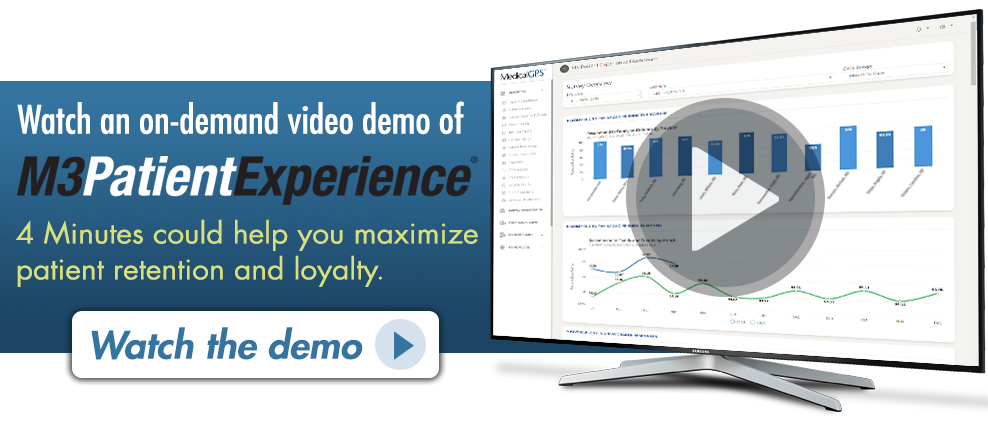Successful, patient-centric communication skills are essential to building trust and positive repore within your practice and with your patients. Here is our second set of tactical techniques that your team can immediately establish to deliver 5-Star Customer Service. If you missed part one of this series, be sure to check it out. Look for part three of our tactical techniques coming in the next few days.
Active Listening Techniques

Effective communication is essential to building and maintaining strong patient relationships and everyone in the practice plays a vital role, not just the doctors and nurses, but the receptionists, back office staff — everybody. Effective communication involves more than just conversation. Effective communication includes the expression of feelings, thoughts, and behavior. Patients desire to comprehend, they also want to know that they are being heard and understood. Effective communication involves a heavy dose of active listening.
Active listening begins even before either party says a word, it starts with making eye contact. As eye contact is made, sharing a warm smile, offering an affirmative nod, and periodically repeating what the patient said, in your own words, will elevate an ordinary encounter to a higher level of a personalized engagement. To foster active listening, ask open-ended questions instead of yes or no questions. Be aware of the patient’s preferred name and use it often – you’ll keep the patient’s attention. Pay special attention to any personal details the patient shares with you, and weave those personal details into future conversations to create a personalized experience for the patient. Personal details may include grandchildren names and ages, achievements of children, new home purchase, and the like.
Avoid the Use of Medical Jargon
It is important that the patient understands what they’re being told, and, unless the patient works in the healthcare industry, it’s not likely that they’ll understand much of the medical jargon that is regularly used between employees within a medical practice. The goal of effective communication between a patient and practitioner is to improve the patient’s health. The use of medical acronyms can be confusing for patients, so it’s best to avoid them as much as possible. Explain things in plain English without sounding condescending. Explanations should be expressed in simple terms in a awy that someone without medical training can understand. As the patient examination or procedure develops, describe each step, including an explanation of why each action is necessary, when appropriate. Step by step explanations can be especially effective and reassuring to patients whenever breaking eye contact is necessary.
Ask Open-Ended Questions
Asking open-ended questions encourages the patient to respond with a more thorough response and allows for the development of meaningful dialogue. For example, instead of asking a patient if they need any help, try asking them how you can help them. This way they are encouraged to give as much information as they are inclined to share, instead of a simple “yes” or “no” answer. When requesting information from patients, it’s better to use a statement like, “tell me about the help you have at home” instead of asking, “do you have help at home”. By allowing the patient to give more detailed answers, patients feel more engaged in the conversation and ultimately more involved in their care.
Effective Telephone Etiquette
When patients call their physician’s practice they expect to be greeted promptly by a pleasant, competent, and helpful person. If your practice utilizes a telephone auto-attendant, (the oft-dreaded phone-tree) ensure that the automated greeting is short (less than 30 seconds from beginning to end) and that the number of phone-tree options are minimal (less than five for sure, three would be better). Using an automated phone-tree to help connect the patient with someone that can actually assist them is not necessarily a ‘bad’ method. It’s when the patient cannot get what they need that the auto-attendant/phone-tree method fails. Providing the patient with the information that they need at the first point of entry takes care of the patient’s needs and sets the gold standard.
The patient’s initial phone call to the practice is often the patient’s first exposure to the practice. The opportunity to make a good first-impression only happens once. It’s important that patients feel warmly welcomed from the very beginning of their experience. Most medical practices already have guidelines in place regarding the answering of phones. The typical format for a telephone answering script includes a salutation, an expression of thanks for calling the practice, the giving of one’s name and, finally, asking the caller what can be done to help them. Have a specific script that is used by all employees, and allow employees to practice that script so that it flows naturally. Aim to create a consistent, warm and welcoming experience for every patient. Finally, a crucial step is to smile when answering calls because patients can hear the friendly tone of your voice, even when they can’t see you smiling.
People may hear your words, but they feel your attitude. John C. Maxwell


